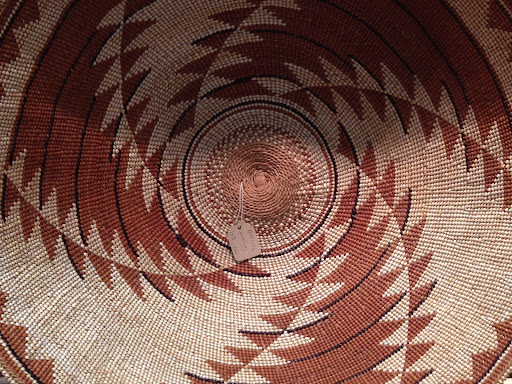Overview
Northern California Indian Basketry

Author: Stephanie Lumsden, PhD (Hupa)
Lesson partner: Rebecca Lowry, Humboldt County Office of Education
Grades: 9-10
Suggested Amount of Time: 70 minutes (1-2 classes)
Curriculum Themes
- History
- Cultural Strengths
- Law/Government
- Relationship to Place
Learning Goals
Students will paraphrase ideas and concepts presented in the video with an active note taking handout.
Students will be able to define TEK and give examples from the lecture.
Students will analyze a poem about California Indian basketry by Ohlone tribal member Linda Yamane.
Lesson Overview
In this lesson students will be introduced to Northern California Indian basketry. The lesson covers the cultural, political and historical significance of basketry to California Indians in the northern part of the state. These lessons cover many of the cultural uses of basketry as well as the traditional ecological knowledge that is foundational to this world class artform. As part of the historical context necessary for understanding the significance of basketry, students will also learn about the violence that settler regimes of property and agribusiness have done to the land and the practice of basket weaving. While the lessons focus on Pomo and Ohlone perspectives and features photos of Hupa/Karuk/Yurok/Wiyot basketry, the main takeaways about basketry can also be applied to other tribal nations in northern California. The lesson covers 3 key terms, includes a 13 minute video and think, pair & share activity, and an in-class poetry reading activity paired with a large class discussion. The goal of this lesson is for students to begin to think of basketry not as a depoliticized art, but as a site of resistance and resurgence for California Indian peoples.
Teacher Background
For California Indian peoples, basketry is a culturally significant practice as well as a high art form. Prior to the U.S. invasion, baskets were part of nearly every element of life for California Indian peoples. The Indigenous peoples of northern California, such as the Hupa, Pomo, and Ohlone, among many others, carry their infants in woven baskets. Baskets were and still are also used in regalia for ceremonial customs. Baskets were also traditionally used to gather, store and cook essential foods like acorns. Basketry was and is also used for adornment in the form of jewelry. Traditionally, there was no part of life that didn’t have basketry and all California Indian families had many baskets to help them with the tasks of daily life. It’s important to note that basket weaving, while not strictly gendered, was/is primarily done by women and two-spirit people in northern California. Also of critical importance to basketry is the relationship between California Indian peoples and their homelands. Baskets are feats of engineering that demonstrate the deep reciprocal relationship between California Indian peoples and the homelands that sustain basketry plants and all life. California Indian peoples gather different materials during different seasons, taking only what they need so the plants can continue to thrive. Prior to the U.S. invasion, California Indians regularly practiced cultural burns as part of their traditional ecological knowledge. The burns helped the landscape thrive and allowed for the regeneration of greater biodiversity and abundance. These practices fortify California Indian relationships with their homelands and are an assertion of sovereignty. Historically, burns were criminalized by the U.S. through laws like the 1850 Act for the Government and Protection of Indians, which made it illegal to set fires. These laws marginalized California Indian land stewardship practices in order to make the land available as private property for settler ranches. Because of how it facilitates ethical relationships with homelands that exceeds the right of property, basketry is a site of political resistance for California Indian peoples.

